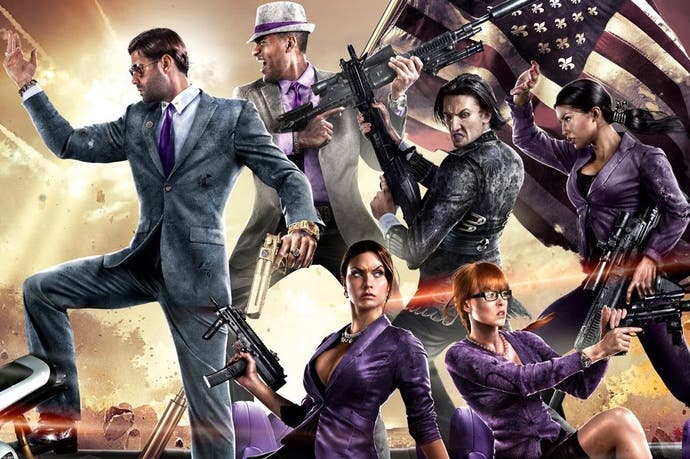Face-Off: Saints Row 4: Re-Elected
Gat's out of the bag.
We had mixed feelings about the PS4 version of Saint's Row 4 after taking a look at the game last week. While the boost to 1080p resolution and higher frame-rates clearly provides a better experience than the last-gen versions, highly variable performance meant that the conversion wasn't as solid as it could be, with the existing PC version remaining the best way to play the game. However, we wanted to go in-depth on final code, while also assessing how the developers would tackle the Xbox One version. Would the developers attempt to run with a 60fps update, or instead lock at 30fps to avoid the consistency issues found on the PS4? On top of that, we also wanted to check out the Gat out of Hell standalone expansion.
As things stand, the final version of Saints Row 4 Re-Elected appears to be identical to the code we previously looked at: uncapped frame-rates are present, while the non-functional v-sync option that puzzled us last week remains equally bereft of purpose in the release code. All of this is mirrored to perfection on the Xbox One edition of the game, except there's an even bigger impact on performance, owing to the system's less capable GPU. On the plus side, there's no reduction in resolution - the Xbox One version of Re-Elected and Gat out of Hell produce the same native 1080p presentation as their PS4 counterparts. This is a big deal bearing in mind the compromises made on the last-gen versions.
The only downside with this rendering set-up is the bizarre lack of any form of anti-aliasing - a situation that is common to both PS4 and Xbox One versions of the game. This creates more pixel-pop, shimmering and break-up across finely detailed scenery than we'd expect to see from a current-gen console release. Quite why the developer went down this route is unclear as the presentation could have been improved by using something along the lines of SMAA, but even plain old FXAA would have been better than nothing. It's all the more curious given that 2x MSAA is present on Xbox 360, while a post-process solution is deployed on PS3.
A similar level of parity is achieved across most areas of the game on both consoles. The core assets and the majority of the effects work are a match, with the PS4 and Xbox One conversions operating on a similar level to the PC release running with maximum settings enabled. However, effects work is a mixed bag - some elements better the PC title, while other aspects are pared back in comparison.
When we compared the PS4 version with its PC and PS4 equivalents, it was apparent that some effects were given a mild overhaul on Sony's new console. In particular, some explosions now feature different flame effects in addition to small plumes of volumetric smoke. Curiously, these changes don't carry across over to the Xbox One game, where we see the same flatter explosion effects found in the PC and last-gen console editions. Other differences appear minimal: ambient occlusion is much stronger on Xbox One, with the effect creating dark thick halos in the spaces where objects and corners meet. However, the presentation often appears somewhat harsh and unnatural. Curiously, this problem doesn't seem to occur in the Gat out of Hell standalone expansion, suggesting that perhaps the ambient occlusion implementation is bugged in Saints Row 4 on Microsoft's console.
Indeed, besides the 'fixed' ambient occlusion in Gat out of Hell on Xbox One, there are no other notable rendering differences between the expansion and the main Saint's Row 4 game. Both titles are using the same engine, featuring the same graphical upgrades and alterations, although the change in setting means that the environments are drastically different. The clean streets of SR4's Steel Port are replaced in Gat out of Hell with a dark ruined city in the heart of a volcanic wasteland. The representation of Hell actually appears to be based on Steel Port - and feels strangely familiar - but with changes to the landscape carved out by collapsed buildings and rocky islands surrounded by a sea of lava. Weather conditions also change in real-time too, adding to the drama: as you drive further into town and away from the volcanically active part of hell, ash descends from the sky and the atmosphere darkens to form a ruinous environment that looks and feels battered by conflict and the elements.
Other enhancements are the same across both current-gen consoles. For example, texture detail gets a boost across some parts of the environment via the use of new artwork deployed across a few surfaces that better showcase dents, scratches, and patterns to walls and spaceship interiors, while lighting in some scenes features an emphasis on the use of bloom. Elsewhere, differences are minimal to non-existent. On occasion, streaming is ever-so-slightly faster on Xbox One compared to its Sony counterpart, but this isn't something that is noticeable outside of viewing still snapshots and slowed down footage - the mild pop-in that occurs during the transition between gameplay and cut-scenes mostly remains at the same level across all formats.
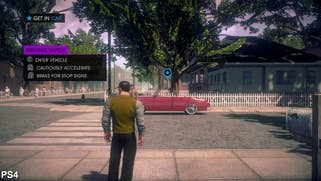

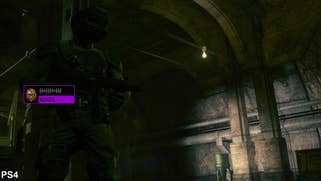
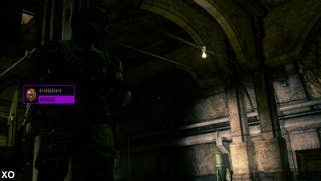
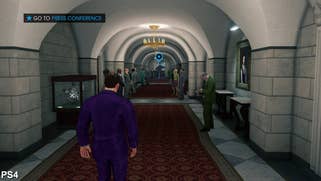
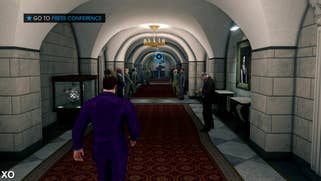
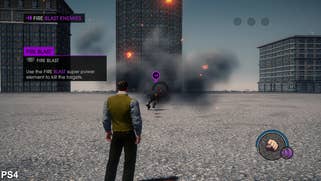
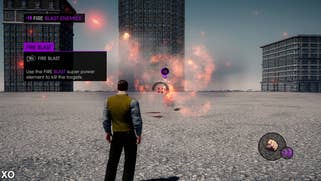
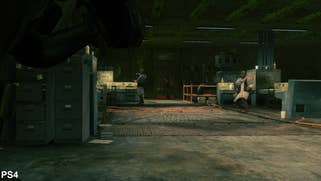
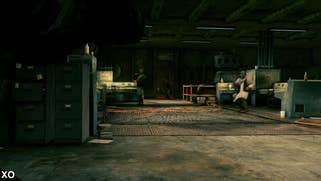
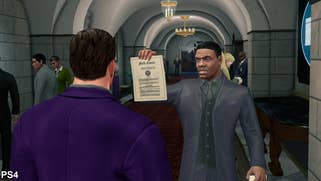
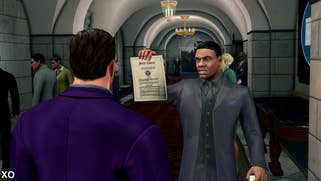
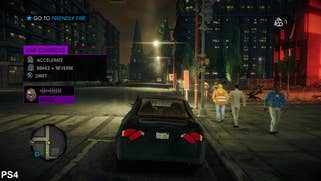
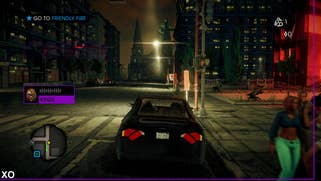


With regards to performance, in the final retail PS4 build nothing has changed from the code we sampled last week. This means that we are looking at an uncapped frame-rate on the PS4, frequently settling between the 30-45fps region under load. The game never exhibits screen-tear, but the erratic delivery of frames to the screen in addition to jarring shifts in fluidity creates an uneven experience. While the constant fluctuations aren't quite as impactful as the Xbox 360 and PS3 games, they are still distracting. The unusual car handling in combination with sudden shifts in controller feedback makes driving across Steel Port more challenging than it should be as a consequence, while precisely aiming during gunfights is also affected by changes in latency on a frame-by-frame basis.
Less detailed locations - such as such building interiors, for example - tax the engine less heavily, and as a result we get higher frame-rates that come close to delivering the smooth motion and responsive gameplay that 60fps provides. These areas provide a snapshot of just how good a current-gen Saint's Row remaster could be running at full frame-rate, but unfortunately such moments are few and far between.
The overall experience is much the same on the Xbox One, although frame-rates on Microsoft's system aren't as fluid as PS4 when the engine is under load. In like-for-like situations we find that frame-rates are often hit harder, causing a greater amount of judder that proves even more distracting. This is especially notable when flying above the volcanic environments found in Gat out of Hell, where the long distance views are impacted by jerky movement as you soar through the skies. Occasionally performance is very similar between both versions, although most of the time we find the PS4 quickly pushes ahead shortly after.
| Saints Row 4 Gameplay | Xbox One | PlayStation 4 |
|---|---|---|
| Lowest Frame-Rate | 23fps | 27fps |
| Average Frame-Rate | 38.7fps | 43.2fps |
| Dropped Frames (from 19054 sampled) | 6770 (35.5%) | 5332 (28.0%) |
The Gat out of Hell standalone game also suffers from the same problems of fluctuating controller response and noticeable judder across both platforms, although in some cases performance is a little better than the main game - the dark and gritty environments of hell contain less concentrated detail, freeing up system resources. Collapsed buildings and fairly large volcanic regions limit the amount of densely detailed locations on offer. Even so, the PS4 once again features a clear performance advantage, sticking more closely to 60fps in less demanding scenes while also avoiding the particularly jarring sub-30fps dips that can occur more frequently on Xbox One.
Given how much the variable frame-rates affect the ebb and flow of the gameplay, we can't help by wonder why a 30fps cap wasn't implemented, or provided as an option in the display settings menu. Given that both platforms usually render above 30fps, a lock at that frame-rate should be easy to achieve, while the consistent level of fluidity provided by a solid update would result in a generally smoother and more enjoyable gameplay experience. But as it stands, that choice isn't available on console.
As things stand, the v-sync option found in the game's display settings menu remains something of a mystery - it doesn't appear to do anything on either console. In fact, it's not clear whether the developer intended to run the game uncapped with v-sync disabled for gameplay, while keeping cut-scenes v-synced and tear-free (a scenario we occasionally see on a tiny minority of titles) or if this option was supposed to act as a 30fps cap. Hopefully, the developers will address this one way or another in a forthcoming update.
Saints Row 4 Re-Elected: the Digital Foundry verdict
These current-gen remasters could have been the definitive versions of what remains a highly entertaining game, but both of them are let down by performance issues. For a start, there's lingering disappointment that the developers could get nowhere near a locked 1080p60, while the lack of a 30fps cap means that gameplay is dominated by obtrusive judder. Meanwhile, there's just a sense that the remaster lacks polish - the mysterious omission of any form of anti-aliasing is difficult to fathom, especially when all prior versions of the game featured it in some way, shape or form.
Even with these problems, the experience across both current-gen consoles is considerably improved over the existing Xbox 360 and PlayStation 3 releases. The increased resolution is obviously welcome, and while the inconsistent frame-rate is a problem, at least we are spared the constant tearing found on the last-gen versions, not to mention the consistently poor, sub 30fps performance that dogged the older releases. Out of the two versions tested here, the PS4 carves out the lead over the Xbox One game through better performance and slight improvements to effects work. While frame-rates are still highly variable, the fluctuations in fluidity aren't quite as impactful on PS4 as they are on Microsoft's console, providing an extra boost to the game's solidity under load.
As things stand, while these remasters are worthwhile, the compromises inherent in the conversion mean that despite some small visual drawbacks, the PC version remains the best edition of the game available - and the good news is that the Gat out of Hell standalone expansion launched this week on all formats, not just the PC but Xbox 360 and PS3 too.
